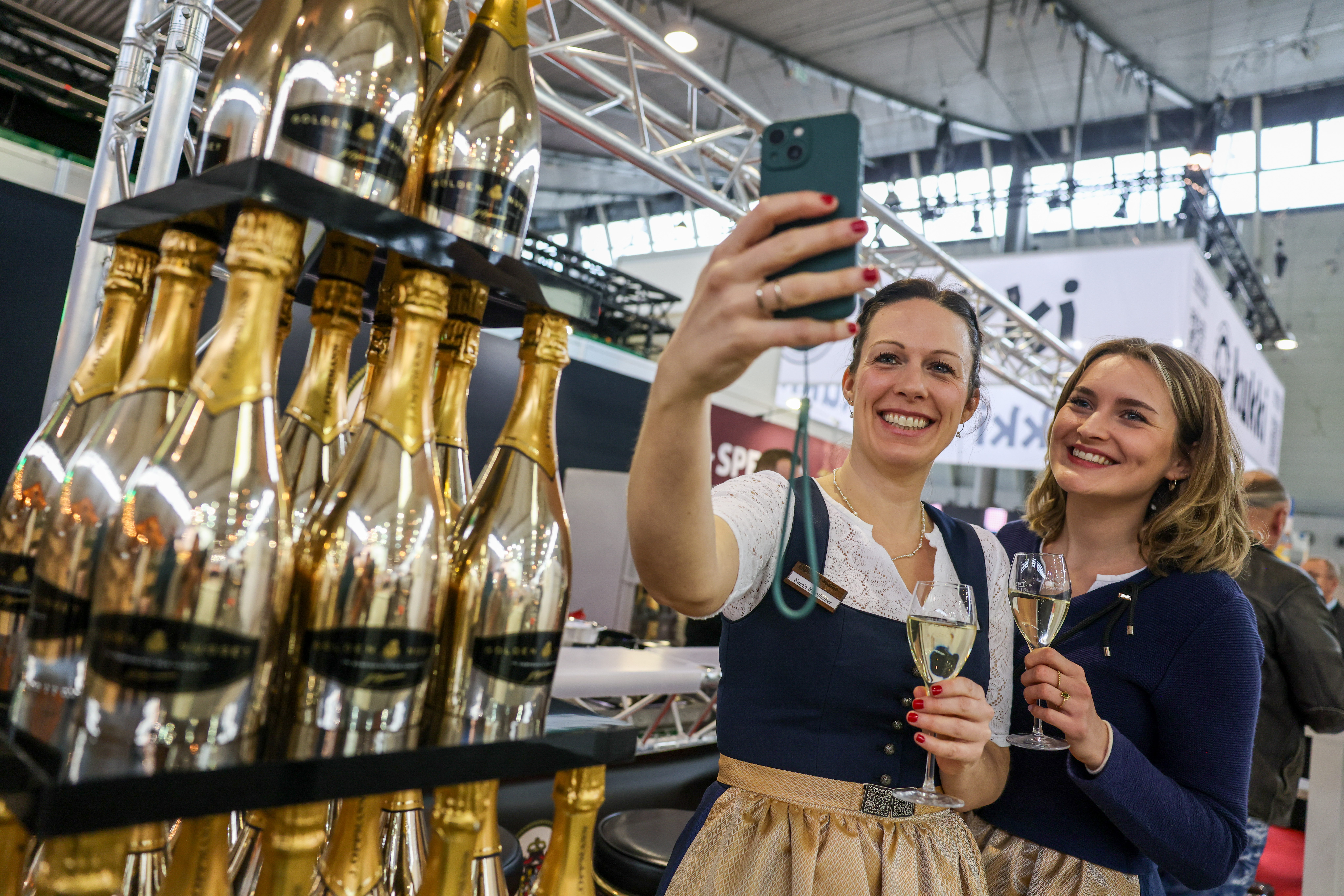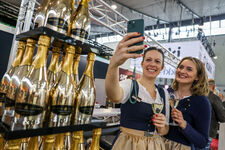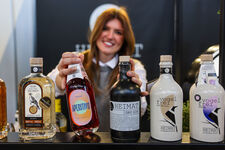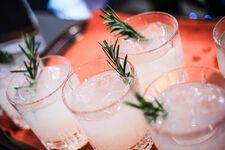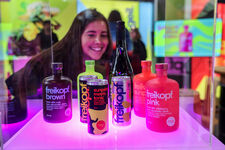Less alcohol, greater visibility: How no & low alcohol is changing drinking culture
New values, new preferences
More and more guests are specifically asking about the alcohol content – even for a simple glass of wine. As Mary Kraaz from VinoVictoria explains: “People are no longer ambivalent about it. The alcohol content needs to match the occasion and many consumers are paying close attention – even for an aperitif or in social situations.” The emphasis is on enjoyment without overindulging, and choice is a key factor too: mocktails for the new or expectant mothers, options for health-conscious individuals or simply tasty alternatives for anyone who wishes to remain sober.
Rethinking sparkling wine: NOUVAUX from Schloss VAUX
A superb example of the high standard this movement has reached comes from the sparkling wine company VAUX in Rheingau. With NOUVAUX, a traditionally fermented sparkling wine with only 2% alcohol, this long-established company is setting new standards. “We wanted to redefine the role played by alcohol when it comes to enjoyment – without compromising on quality,” explains Christoph Graf, Chairman of VAUX.
Developing this wine proved to be both a technical and sensory challenge: from the specially composed base wine to the vacuum evaporation and second fermentation in the bottle. “It was almost an impossible process – but this is exactly what spurred us on,” explains Graf. “To create a beverage that has character, elegance and lightness, which combines all the classic VAUX virtues, was only possible with a radical approach to the standard of quality.”
The market potential also speaks volumes: “Sparkling wines and low-alcohol products have proven very popular on the international markets in recent months,” continues Graf. “With NOUVAUX, we have managed to combine both of these booming categories in one product – just in time.”
Professional tip: For anyone looking to try their hand at a similar product, VAUX recommends having a clear concept, scientific backing and an uncompromising standard of quality.
Less alcohol, more style: The “10.5” from Potzinger
Wine is also open to new approaches – as proven by Stefan Potzinger from southern Styria. His “10.5” Welschriesling is a fresh, modern summer wine that intentionally plays on the trend of less alcohol. “We wanted to create a wine that was light, and yet had character – the perfect partner for summer days, lunches and modern cuisine,” explains Potzinger.
With an alcohol content of only 10.5% by volume, the 2024 vintage is particularly agreeable and boasts an animated freshness of green apple and white peach. The “10.5” offers interesting perspectives for the gastronomy sector – as a lighter wine accompaniment, a basis for signature sparkling wines, or a charming response to the ever greater demand for more conscious enjoyment.
“The market needs options where the focus is more on enjoyment and less on abstinence,” explains Potzinger. “This is exactly the approach we have taken with the ‘10.5’ – a quietly stylish alternative with nothing to prove.”
Replenish, don’t replace: Wine-based spirits
The Cantina I Vini di Maremma is also exploring new options – with a collection of wine-based spirits. In cooperation with Turin start-up The Spiritual Machine, nine creative products have been launched under the title of Le Muse dell’Alchimia – among them, Vermouth, Bitter, Amaro and Glögg.
The goal is to expand the product range instead of replacing it. Target groups include young, urban consumers, as well as the international bar scene. With labels inspired by enchanted worlds and feminine creativity, the concept is aiming for emotional attachment and mixability. In Italy, the products are already established in the beach bars and restaurants, while stock is also being exported to France, Canada and China.
Market potential for practical application
- Non-alcoholic wines are still considered difficult, as they often lack emotional appeal. There is plenty of room for innovation here – and brave brands willing to take this on.
- Mocktails are gaining in popularity, particularly in spa-oriented hotels and restaurants with a focus on wellness. Those with plenty of sugar appeal to a specific target audience, while the more acidic, tonic-based versions are stylish and less sweet.
- The market for alcohol-free and low-alcohol products is growing annually by around 10%, primarily in the area of sparkling wine, beer and alcohol-free spirits.
- Consumers are not looking for “light versions”, they want top-quality, standalone products that have a clear story, design and style.
- Sustainability is playing an increasingly important role: lower alcohol content can, when approached correctly, also contribute to a lower carbon footprint.
Conclusion: New opportunities for creative hosts
The demand for alcohol-free or reduced alcohol beverages is here to stay – as shown by consumer data, innovation projects and increasing visibility at international competitions. Anyone involved in gastronomy these days not only needs to follow this trend but to shape it too.
Tip for businesses: Use this trend to enhance your selection of beverages, don’t view it as something forced or compromised. Develop signature drinks, integrate new styles involving fermented ingredients or herbal essences and bring your bar culture to the next level.
________________________________________________
How to succeed with NoLo
1. Original alternatives:
Don’t offer alcohol-free and low-alcohol beverages as options for those “missing out”, but instead as original alternatives with story, style and emotion.
2. Signature, not standard:
Whether a mocktail, sparkling wine or light wine – develop one or two signature drinks or pairings that perfectly match your house style. Increase brand awareness and appeal to the desires of your customers.
3. Establish product expertise in the team:
Service & Bar training for new products: what does brut at 2% mean? How does vacuum evaporation work? What dishes go best with low alcohol content?
4. Understand target groups:
Pay attention to situational motivations for consumption: the business lunch, wellness weekend, pregnancy, designated drivers. The more targeted your position, the more believable your offer.
5. Upgrade design & presentation:
Elevate No & Low Alcohol products to the same level as classic cocktails and wines with carefully selected glasses, garnishes and promotional language. Your guests will notice the difference.
6. Communicate the added value:
Discreetly emphasise sustainability, agreeability or low-calorie content – e.g. using icons or references such as “the perfect accompaniment to a light lunch” on the menu.
7. Mix and match:
Play with light spritzers, tonic-based beverages or fresh herbs. Low-content can also make a big splash – especially when it comes to aromas.
_______________________
Be inspired
INTERGASTRA 2026 provides the perfect platform for exploring innovative non-alcoholic and low alcohol options. Gain inspiration from new products, exciting tastings and practical demonstrations and discover new ways in which to transform your drinking culture.
zurück zur Übersicht